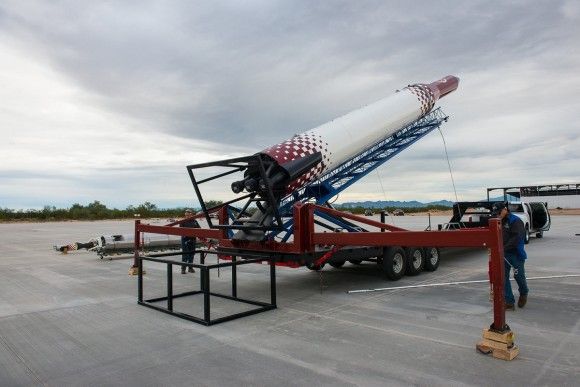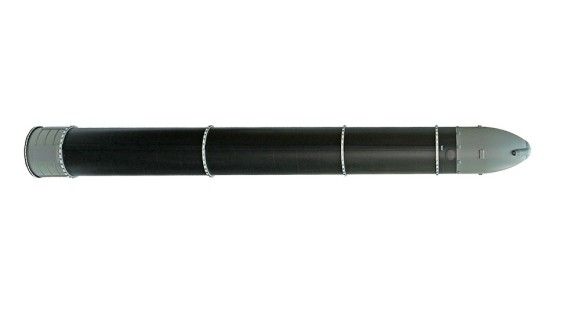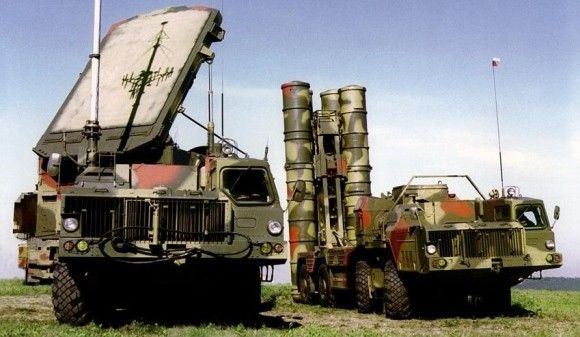Armed Forces
Iskander Missiles Kill The INF Treaty. Berlin and Prague in Danger
The recent reports suggest that the Russian Iskander ballistic missile system has a range which exceeds 500 kilometres. The said system is also said to be capable of striking targets at distances of up to 700 kilometres. If the above statements are true, this would mean that Russia has just obtained a set of capabilities which is prohibited by the INF treaty. Not only has Moscow done that through implementation of a new cruise missile, but also through introduction of ballistic missile into the utilized arsenal. The latter weapon is faster, and harder to intercept. This would mean that the agreement signed by the leaders of the United States of America and USSR is even less meaningful now, than it was before.
Russia has deployed the Iskander tactical missile system within the Kaliningrad Oblast, using a civil vessel, within the framework of an exercise. On that occasion, reports emerged suggesting that the maximum range of the ballistic missiles used within the system is between 500 to 700 kilometres. The claims that had been made earlier said that the aforesaid parameter was characterized by a value of up to 500 kilometres. This was indirectly confirmed by, among other subjects, the Lithuanian Minister of Foreign Affairs, Linas Linkevičius who noted that the international treaties might have been broken, once Moscow decided to introduce the weaponry mentioned above into the array of equipment used by the Armed Forces. Jacek Durkalec representing the Polish Institute of International Affairs (PISM) think tank also referred to the issue above. Formally, the maximum range of a ballistic missile, according to the INF treaty, is defined as a distance at which the missile has been tested. The same parameter referring to a cruise missile defines the distance which may be reached by the weapon used in a standard cruise mode. However, the above conditions do not have an impact on the fact that the basic assumption of the INF treaty was to eliminate the ballistic missiles with ranges between 500 and 5500 kilometres. Development of tactical weapons, the range of which exceeds 500 kilometres, is an issue which is negating the aforesaid assumption.
The agreement concluded back in 1987 by and between the United States of America and the USSR, limiting the rights to be in possession of medium/intermediate missiles (INF Treaty) bans manufacturing, testing and possession of cruise and land-based ballistic missiles, with ranges between 500 and 5500 kilometres. Back in 2014, the US authorities announced that Russia breached the INF Treaty, due to the fact that Moscow initiated development works pertaining to a new cruise missile. Most probably, the said missile is a derivative of the Kalibr-NK missile, launched from the Iskander land based launchers, also referred to as the Iskander-K.
Not only does such system provide the Russians with an option of attacking targets in the Central and Eastern Europe, as the Western part of the continent is also placed within the range of the weaponry mentioned above. Deployment of similar missiles based on the sea platforms does not breach the INF treaty, nonetheless, land based missiles still constitute a violation to that agreement. Not only, as it turned out, was the INF Treaty violated through introduction of the Iskander system cruise missiles into the Russian inventory, as the ballistic missiles may also constitute a potential breach to the said agreement.
The situation is dangerous, since the latter missiles are capable of reaching their targets within minutes. The Iskander-M ballistic missiles are also very difficult to intercept, as this may be done solely with the use of missile-defence systems with a precisely defined set of capabilities. For the sake of comparison, the cruise missiles of the Iskander-K system probably reach speeds which are subsonic (cruise to the targets at distances exceeding 500 kilometres would take at least several minutes). They may, potentially, be destroyed by e.g. conventional air-to-air missiles, should the jets that carry such weaponry be capable of detecting such targets (e.g. once the AWACS relays the relevant target data and coordinates to them).
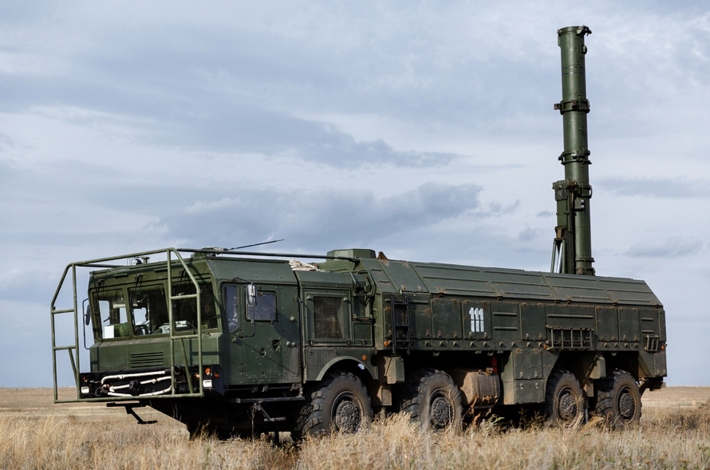
Should one assume that the Iskander missiles have a range of around 700 kilometres, the whole territory of Poland, along with Berlin, or the Czech Caslav airbase would all be placed within the range of the weapon. In this case, also the ballistic missiles, alongside the cruise missiles, could be used to act against potential deployment of the NATO forces in the Central and Eastern Europe. What is more, one should remember that the cruise missiles themselves are difficult to intercept, should they be launched from land-based locations. They are also capable of conducting their flight, following the terrain and using the protection offered by this.
NATO actions required to implement an effective array of countermeasures against the missile systems need to be multi-dimensional, they shall also have a long-term character. All of these factors would also generate high costs. Not only does the above refer to deployment of the missile defence system, but also to camouflaging and scattering of the infrastructure, e.g. through creation of highway strips, or through expansion of own offensive capabilities. It shall be remembered that even though NATO member states have been continuously expanding their capabilities referring to the land- and sea-based cruise missiles, such as JASSM, LRASM, Storm Shadow/Scalp EG, the use of the tactical ballistic missiles still remains limited – this refers, above all, to the United States of America (TACMS/ATACMS – ranges of up to 300 kilometres). Also, the successor of those missiles which is to be introduced into the US inventory during the next decade – the LRPF missile – is to have its range limited to 500 kilometres, conforming with the provisions of the INF treaty. Both missiles mentioned above use solely conventional warheads. Considering the Russian doctrine, it is highly probable that the Iskander missiles have also been fitted with nuclear warheads, and this refers both to the cruise, as well as to the ballistic derivative of the weapon.
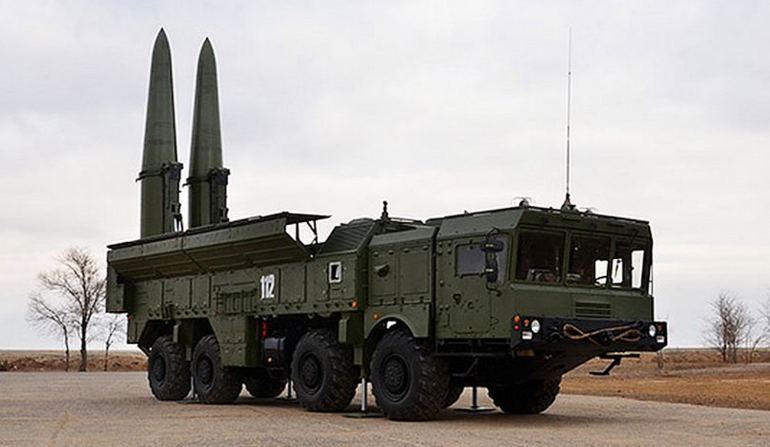
Potential extension of the range of the Iskander system missiles by the Russians would mean that during a defensive operation, the missile defence systems remaining at disposal of the defender may be scattered to an even higher extent, which in turn exposes them to a multi-directional attack. Moreover, the areas of the Western states, which so far have been considered to be relatively safe, are now endangered by the new missiles too, which expands the scope of military influence and measures available to Moscow. Probably, most of the US bases in the West Germany still remain out of reach of the Iskander-M missiles. Nonetheless, the locations where the US forces are to be stationed in Poland are probably going to be endangered by the Russian weaponry.
At the same time, potential termination of the INF treaty (in the light of the Russian violation) could be a subject of an informational and media-driven response issued by Moscow, but also actual steps could be taken by the Russians, through development of systems capable of striking targets at distances of 5 thousand kilometres and more, similarly as the former SS-20 missiles. This makes it more difficult to render a symmetrical response to the Russian threat. Development of the missile defence systems, even though it is absolutely required, is also quite costly at the same time. It is also imperative to place an emphasis on integration of the systems (and “layers” - short range missiles shall be capable of intercepting the cruise missiles). Secondly, the potential remaining at disposal of the defender shall also be enhanced, both in the quantitative, as well as in the qualitative dimension. This means that tough political decisions should be taken. A lot of determination is needed too.
The current situation is a result of erroneous assessment of the Russian intentions by the Western states, and this status has been valid and present until 2014. Also, the West implemented structural and financial cuts, also in the field of missile defence, and also with a reference to the integrated systems. This forms an urgent need to issue a complex response, both in the military (as development of the capabilities which may limit, in a variety of ways, the threat posed by Iskanders and the projection of the Russian military potential in the region), as well as in the political dimension.
The situation preceding the election in the United States of America and Germany, fused with migrants crisis and heightened popularity of the radical political circles, exposes the NATO member states to the Russian blackmail. The people in power shall, even despite the circumstances referred to by the preceding sentence, consider the Russian missile threat as serious, especially for Europe, and take relevant steps to neutralize that threat. Implementation of such countermeasures would be costly and time-consuming which, as mentioned above, is a result of years of neglect. The fact that the INF treaty is being violated by Russia is still going to constitute a source of serious danger for Europe and its Central region.

